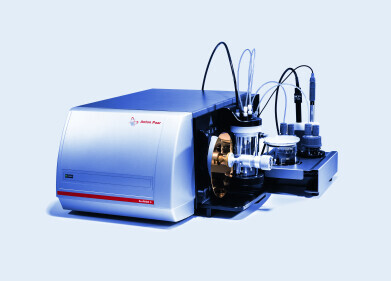Laboratory Products
How Do You Know When You're Itchy?
Sep 19 2019
Breakthrough research from the Salk Institute has revealed new insight into the mechanics of the itch, which could be used to develop new treatments for chronic itchiness associated with conditions such as eczema and diabetes, as well as some cancers.
The findings were published in the journal Cell Reports and explore the role of light touch stimuli in everyday tasks, such as playing a musical instrument, picking up an object or sensing a bite from an insect. The researchers focused on how neurons in the spinal cord are used to transmit "itch signals" from the skin to the brain and at what intensity.
Researchers identify specialised pathways within the spinal cord
Professor Martyn Goulding, senior author of the study and Salk Institute Professor explains, "the takeaway is that this mechanical itch sensation is distinct from other forms of touch and it has this specialised pathway within the spinal cord."
The findings build on previous research conducted by Goulding and his colleagues, which spotlighted a set of inhibitory neurons that block the mechanical itch pathway in the spinal cord and act as cellular brakes. Without these inhibitory neurons, the body is unable to produce the neurotransmitter neuropeptide Y (NPY), a deficiency that can lead to chronic itch.
Light touch neurons act as itch accelerators
In the new study, the researchers wanted to pinpoint how the itch signal is transmitted to the brain to trigger the sensation of itchiness. Postdoctoral Fellow David Acton hypothesised that without NPY neurotransmitters to inhibit the mechanical itch pathway, neurons in the spinal cord that are normally used to transmit light touch sensations switch into overdrive.
Acton identified these "light touch neurons" as excitatory Y1 neurons in the spinal cord and conducted an experiment to test whether they acted as itch accelerators. To do this he removed both the "brake" (NPY) and "accelerator" (Y1) neurons from mice, which eliminated the urge to scratch even when exposed to light touch stimuli. When given drugs that activated Y1 neurons, the mice engaged in spontaneous scratching, regardless of touch stimuli. For the team, the findings prove that the NPY neurotransmitter controls activity levels of Y1 neurons and influences sensitivity to light touch stimuli and itch sensations.
Researchers hope to target chronic itch
"By working out mechanisms by which mechanical itch is signalled under normal circumstances, we might then be able to address what happens in chronic itch," explains Acton.
From investigating the mechanics of the itch to developing cures for cancer, laboratories play a crucial role in advancing scientific research. For insight into how modern laboratories are adapting to a recent softening in the UK market for lab equipment, don't miss 'Lab firms look to their service sections to ensure ongoing growth.'
Digital Edition
Lab Asia 31.2 April 2024
April 2024
In This Edition Chromatography Articles - Approaches to troubleshooting an SPE method for the analysis of oligonucleotides (pt i) - High-precision liquid flow processes demand full fluidic c...
View all digital editions
Events
Apr 25 2024 Istanbul, Turkey
Apr 28 2024 Montreal, Quebec, Canada
May 05 2024 Seville, Spain
InformEx Zone at CPhl North America
May 07 2024 Pennsylvania, PA, USA
May 14 2024 Oklahoma City, OK, USA

.jpg)
















